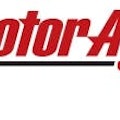Adaptable Forward Lift 10 Two-Post Lift Provides Best Lifting Setup for a Variety of Vehicles
Versatile equipment that works with many vehicles can help independent repair shops get the most profit out of each work bay. That’s why the Forward Lift I10 10,000 pound capacity two-post lift comes with Spot-Rite™ three-stage front arms which are designed to properly lift a wide range of vehicles.
“Most shops service a variety of cars, trucks, SUVs and vans daily,” says John Uhl, sales and brand manager for Forward Lift. “If certain bays aren’t equipped for certain vehicles, bottlenecks can occur and reduce productivity. Shop managers can assign any light-duty vehicle to a work bay equipped with an I10 two-post lift. Its Spot-Rite three-stage arms are equally adept at symmetrically holding heavier vehicles and asymmetrically holding lighter ones.”
Forward Lift’s Spot-Rite design provides the best of both worlds by including one three-stage arm and one two-stage arm on each column. The rear arm has a maximum reach of 58 inches toward the back of the vehicle, while the shorter front arm can be angled toward the middle of the bay. This asymmetric-like setup supports the vehicle’s center of gravity and places the vehicle’s doors clear of the lift’s columns. For symmetric lifting of larger vehicles, the technician simply shortens the rear arm and angles the front arm more toward the front of the bay.
Spot-Rite arms come standard on the Forward Lift I10 two-post lift. The lift has 10,000 pounds of capacity, which is enough to pick up vehicles up to and including Class 2 pickup trucks. Additional features on the I10 two-post lift include a single-point lock release for easy lowering of the vehicle, spring-operated automatic arm restraints that disengage at floor level, a padded overhead shutoff, and adapter height extensions for reaching manufacturer-recommended pick-up points.
“A 10,000 pound capacity lift that can accommodate both symmetric and asymmetric lifting can be used for most vehicles you encounter on any given day in the shop, helping your business run smoothly and efficiently,” says Uhl.
For more information about the I10 two-post lift, visit the newly redesigned forwardlift.com.
Subscribe to Motor Age and receive articles like this every month…absolutely free. Click here
About the Author
